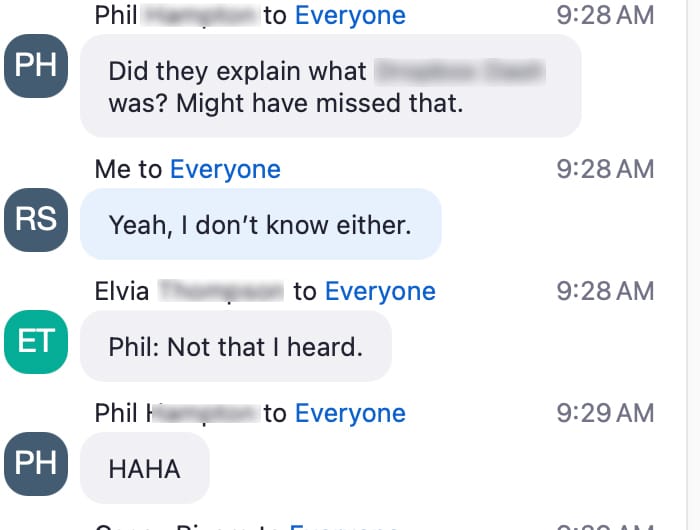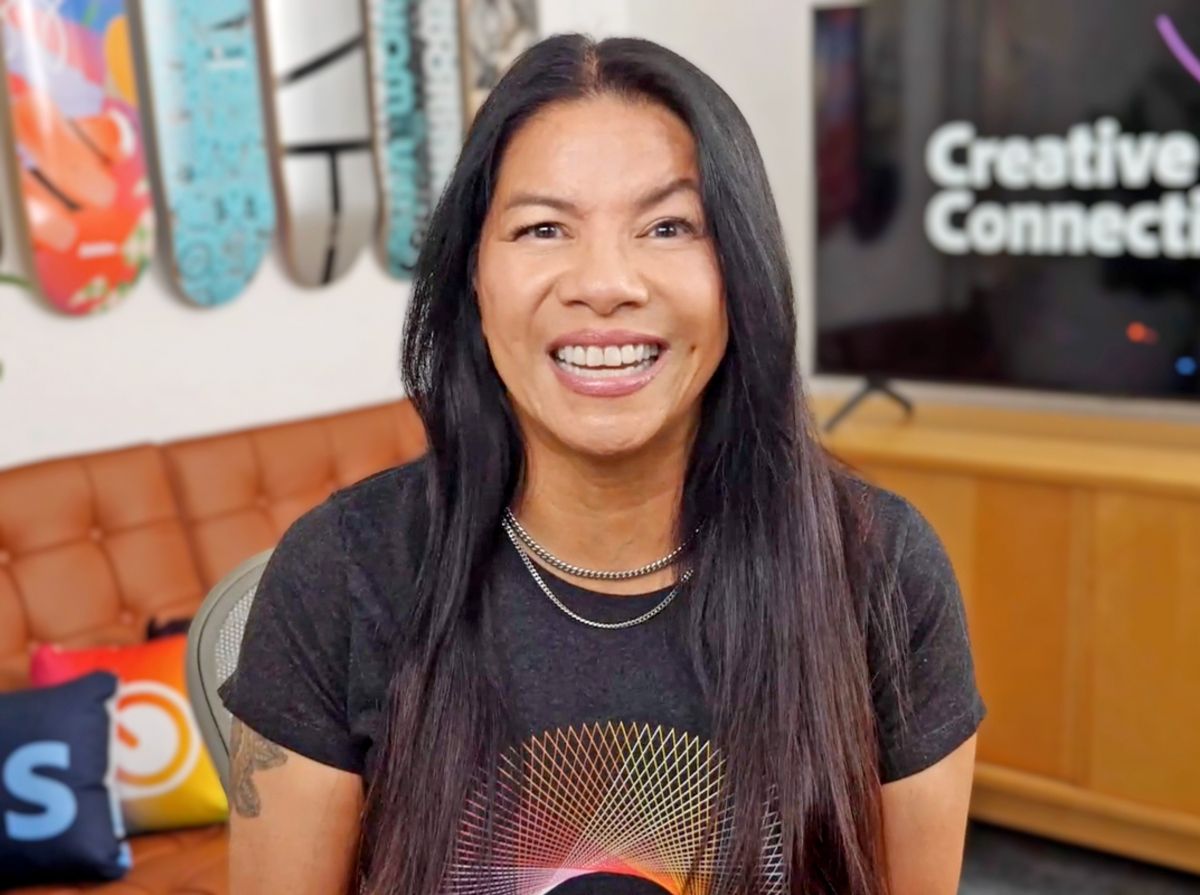Last Wednesday, I found myself staring at a screen waiting for what was supposed to be an "engaging webinar” hosted by a well-known cloud-based file storage company.
Two co-hosts floating in digital voids (with black virtual backgrounds), lobbing the softest possible questions at each other like they were afraid of accidentally creating actual content. Twenty minutes of meaningless back-and-forth that danced around the topic without ever landing on it, while the chat sat there deader than my motivation on Monday morning. I couldn’t help but think, When did we collectively decide that professional events had to be this soul-crushingly sterile?

The chat bar as seen during this tech company webinar. The hosts completely ignored the chat, and no one knew anything about the very product they were talking about. Crazy.
Somewhere along the way, we started confusing “professional” with “performative.” We began treating our audiences like passive consumers rather than fellow humans craving genuine connection. And in doing so, we’ve created a landscape of forgettable presentations that people endure rather than enjoy.
TLDR; skip the rest of the article and jump down to download my Human-First Host guide below.
The Moment Everything Changed
In 2016, I launched my first webcast interview series, “Typography Dojo,” with no idea it would open so many doors. My original plan was to produce a video podcast, but I decided to make it a live event with an audience. This made it scarier, but also gave me energy because I wouldn’t just be talking to myself.
I posted the event on Facebook and did a live interview with my friend Nikki Villagomez for about 45 minutes. There were 67 attendees and 7 questions. I just used a webcam and earbuds—definitely not broadcast quality—but fun enough to start building a community. Within three years, I had 55 episodes, exponentially grew my network, and helped propel my visibility in the design and typography communities... all by creating a platform that gave a spotlight to type designers and typographers doing amazing work.
That’s when I realized that the most powerful events aren’t performances. They’re gatherings and rituals that feel like coming home.
Why Most Events Fall Flat (And How Yours Can Soar)
The event industry has an empathy problem. We’ve become so focused on polished delivery that we’ve forgotten why people show up in the first place. They don’t come for perfect presentations, they come for connection, insight, and the feeling that they belong somewhere.
Most hosts approach events like they’re giving a lecture to strangers instead of having a conversation with friends. They prioritize their own agenda over their audience’s actual questions. They perform enthusiasm instead of sharing genuine excitement. They moderate discussions instead of facilitating connections.
Think about the last event that made an impact on you. I bet it wasn’t because of flawless slides or rehearsed talking points. It was probably because someone made you feel seen, sparked your curiosity, or introduced you to an idea (or person) that changed your perspective.
The secret isn’t in the technology or the topic, it’s in the humanity. Sure, the topic compels them to register, but the humanity keeps ‘em coming back. It’s in remembering that behind every screen name, every raised hand, and every chat message is a real person seeking real connection.
The Hospitality Revolution
What if we stopped treating events like performances and started treating them like dinner parties? What if instead of presenting at people, we conversed with them? What if we prioritized genuine curiosity over polished perfection?
This shift from performer to host changes everything. Hosts think about their guests’ comfort. They notice who’s not engaged and draw them in. They facilitate connections between people who might benefit from knowing each other. They create an atmosphere where everyone feels welcome to contribute their authentic selves.
When you approach events with this mindset, magic happens. Attendees transform from passive observers to active participants. One-time viewers become community members. Standard presentations become catalyst moments that people reference months later.
Your Next Event Can Be Different
Whether you’re planning a virtual workshop, member meetup, or corporate presentation, you have the power to create something memorable. You can be the host who talks like a friend is listening, who asks what the audience actually wants to know, who brings authentic energy that’s contagious.
You can lead with hospitality instead of authority, work the room instead of just delivering content, and connect people instead of just moderating discussions. You can stay present when things go sideways, use humor to make everyone feel safe, and create rituals that turn one-off events into recurring experiences.
Most importantly, you can prepare deeply and then trust the moment, knowing that the best conversations often happen in the unscripted spaces. And you can follow through, turning event attendees into genuine community members.
The choice is yours: will you perform for your audience, or will you gather with your community? (I know which one I’m choosing.)
The Permission Slip You’ve Been Waiting For
The tools and framework exist to help you choose connection over performance. The only question is whether you’re ready to make that shift from speaker to host, from presenter to connector, from performer to human.
Because here’s what I’ve learned after years of both attending and hosting events: people don’t remember what you said as much as they remember how you made them feel. And the events that make people feel most alive are the ones that feel most human.
Your audience is waiting. Not for perfection, but for connection. Not for performance, but for genuine conversation. Not for another presentation, but for a moment of true community.
Are you ready to give it to them? I’ve compiled everything I’ve learned about human-first hosting into a practical method that I’ve used to train hosts for events that I’ve produced. Discover the 11 principles that turn standard presentations into community experiences.
Download the complete Human-First Host guide with the method detailed ⬇️ and let me know how it works out for you. This is the first draft, so I’d appreciate your feedback!

